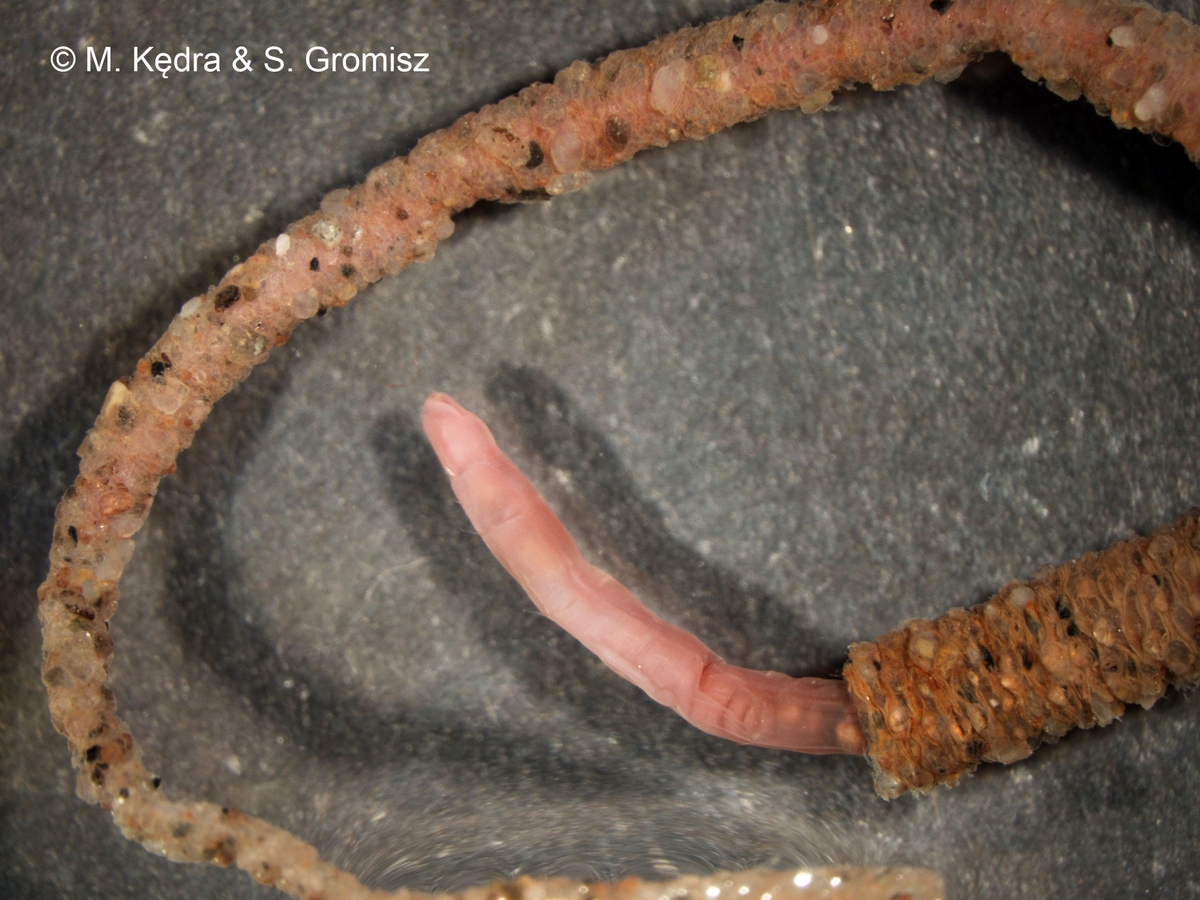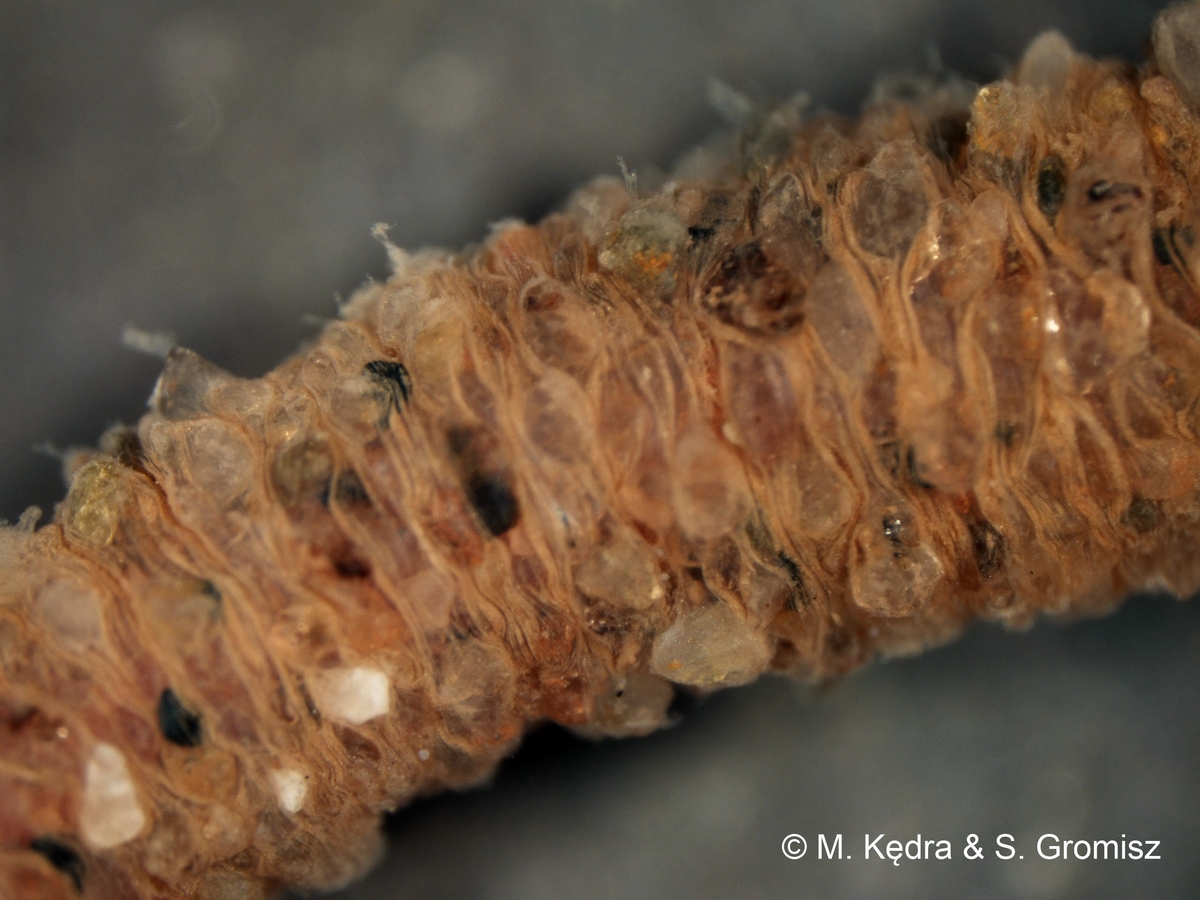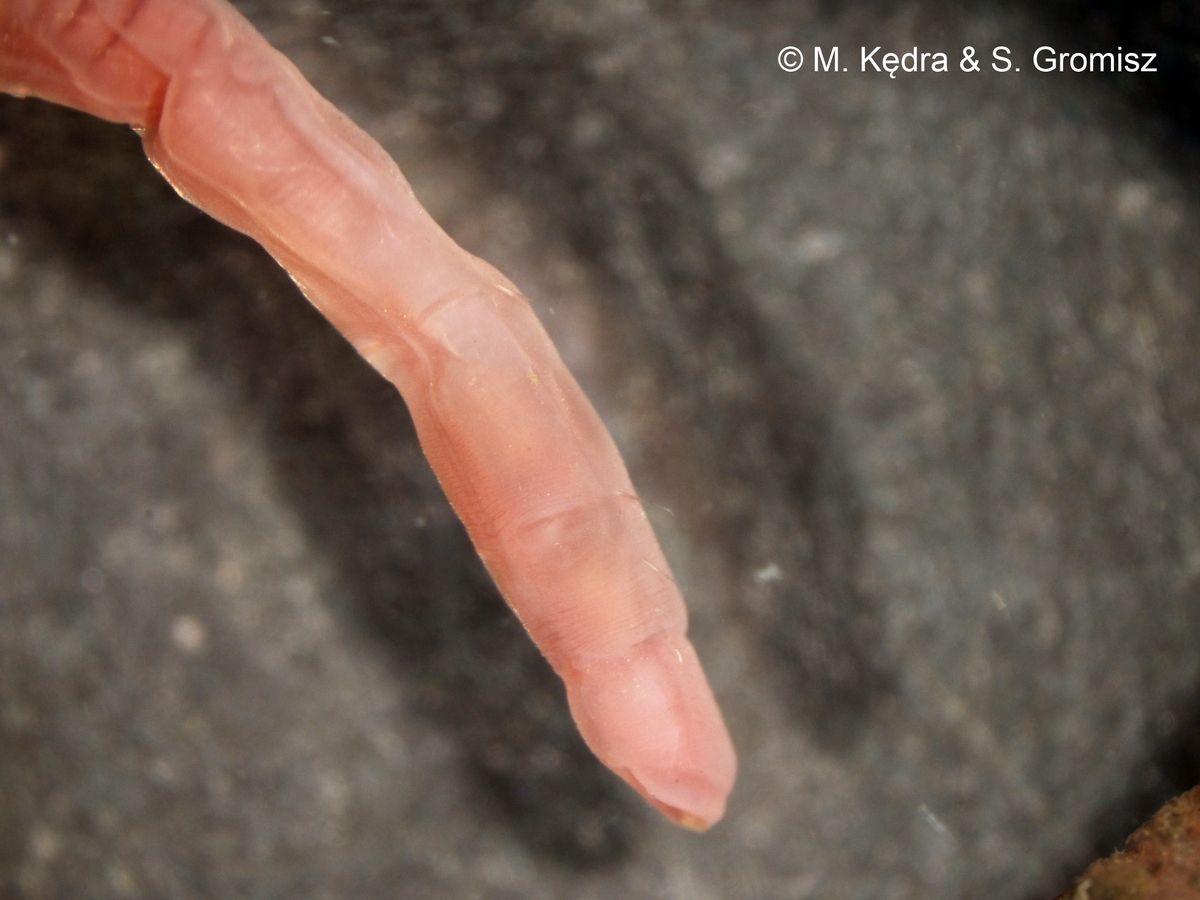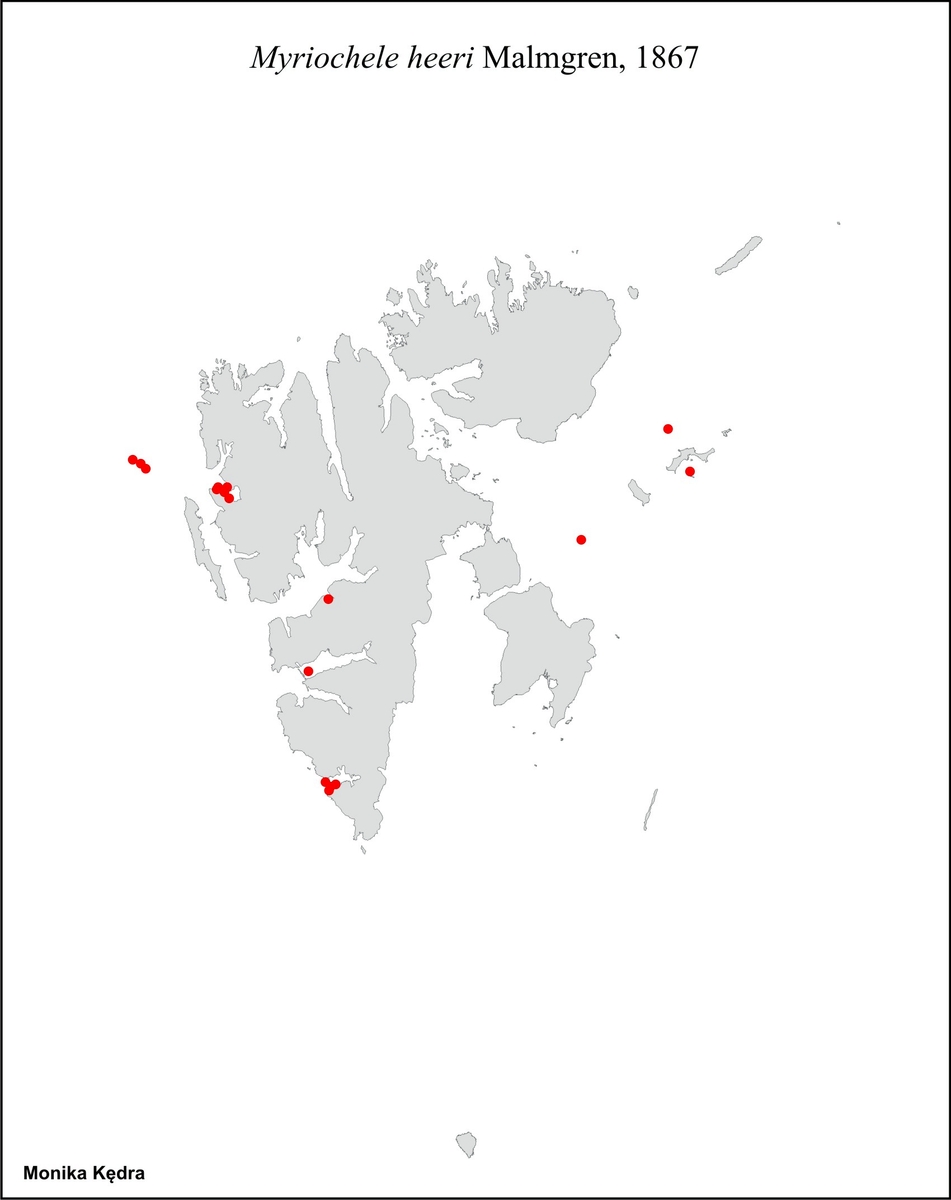Myriochele heeri Malmgren, 1867

|

|

|

|
Myriochele sarsi Hansen,1882
Distinguishing characteristics
Head region cylindrical, rounded and distinctly set off from thorax by a constriction.
Tube rigid with firmly cemented sand grains or sponge spicule, often in a helical pattern.
Species description
Body short, nearly cylindrical, posteriorly tapering and dorsoventrally flattened. Head region cylindrical, anteriorly more or less rounded and distinctly set off from thorax by a constriction. Collar low and thick. Thorax with 3 chaetigers, 20-30 abdominal segments. Anterior notopodia with distally spinous capillary chaetae. From 5th or 6th notopodium also smooth acicular chaetae in lower part of bundle. Abdominal tori long, narrow, nearly rectangular with uncini in irregular rows. Uncini with 1 upper and 1 lower tooth. Pygidium with a pair of weakly developed lobes. Tube rigid, long and slender with a cylindrical middle part and long, tapering ands. Posterior part often like a long filament ending in a lump. The tough secretion layer of the tube encrusted with mainly light-coloured sand grains or sponge spicules with a few darker grains, often showing a helical pattern.
Size
Worm up to 35mm long and 2mm wide, tube at least up to 45mm long and with greatly varying width.
Color
In alcohol brownish or pale yellow. In some individuals the green intestine can be observed through the translucent body wall of the abdomen.
Habitat
Mainly on continental slope and outer continental shelf. 120-2600 m.
Mobility
Mobile.
Feeding
Surface deposit feeder.
Suspension feeder.
Life cycle
Distribution
Arctic-Atlantic-Pacific species, not certain if data – cosmopolitan, reliable data: from the sea of Japan to the south of Norway, Reykjanes Ridge.

